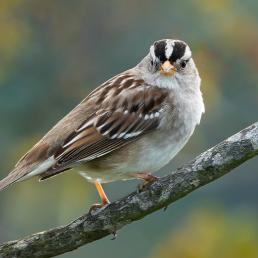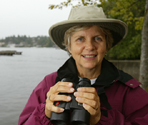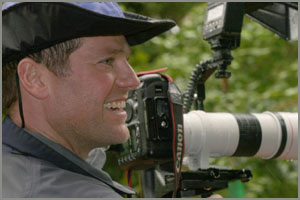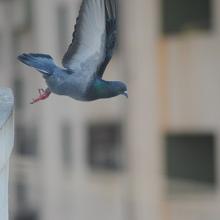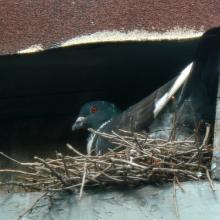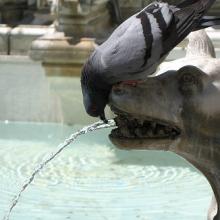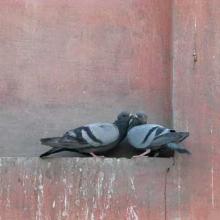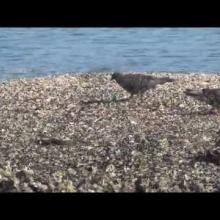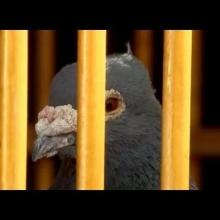

Join BirdNote tomorrow, November 30th!
Illustrator David Sibley and actor H. Jon Benjamin will face off in the bird illustration battle of the century during BirdNote's Year-end Celebration and Auction!
A Rock Pigeon bobs its head as it walks, making it appear that its head and feet are linked. Pigeons' eyes are on the sides of their heads, permitting them to watch for predators from all directions, but limiting their ability to distinguish distances. To compensate, these birds move their heads and can see differences in apparent motion between nearby and distant objects. Your local Audubon chapter can help you learn more about birds.
Get BirdNote whenever you want when you sign up for our podcast at BirdNote.org.
BirdNote®
Rock Pigeons: Bobbleheads
Written by Frances Wood
This is BirdNote!
[Cooing of Rock Pigeons in urban setting]
Anyone who has spent time watching Rock Pigeons has probably noticed that pigeons bob their heads forward and back as they walk. It appears their head and feet are linked. When they walk, they bob; when standing still, they don’t.
[Rock Pigeons cooing]
To understand why Rock Pigeons bob their heads, we need to know some basics about birds’ vision. We humans have two eyes facing the same direction, which gives us depth perception. Pigeons’ eyes, though, are on the sides of their heads, permitting them to watch for predators from all directions, but limiting their ability to distinguish distances.
To compensate, these birds move their heads. By doing so, they can rely on differences in apparent motion between nearby and distant objects. Closer objects appear to move faster than do distant objects.
[City sounds]
If the Rock Pigeons in the park are standing still, they have little need for depth perception. But once they begin to strut around looking for food, the head-bobbing kicks in, giving the impression their head and feet are connected.
[More Rock Pigeons cooing]
I’m Michael Stein.
[More Rock Pigeons cooing]
###
Cooing of the Rock Pigeon provided by The Macaulay Library of Natural Sounds at the Cornell Lab of Ornithology, Ithaca, New York. Recorded by A.L.Priori
Ambient sounds provided by Kessler Productions and by C. Peterson
Producer: John Kessler
Executive Producer: Chris Peterson
© 2013 Tune In to Nature.org July 2016/2019 Narrator: Michael Stein
ID#071805ROPIKPLU ROPI-03c
